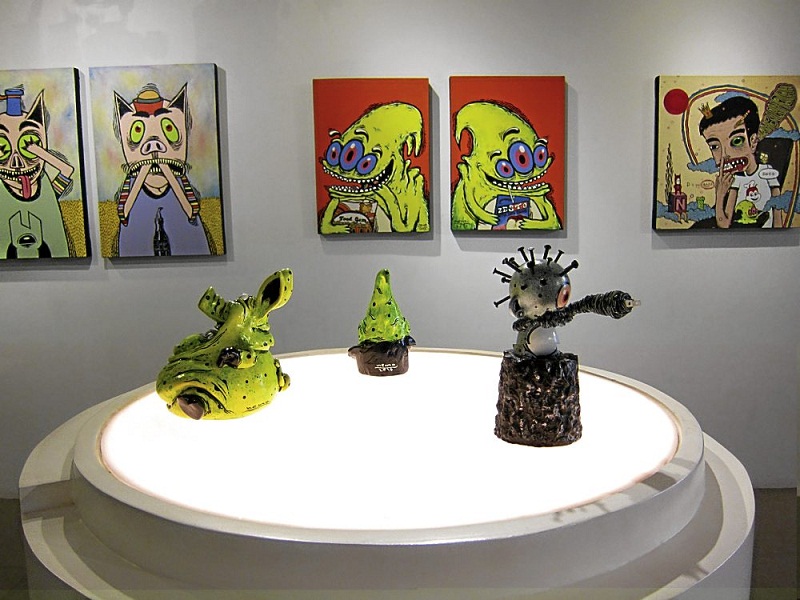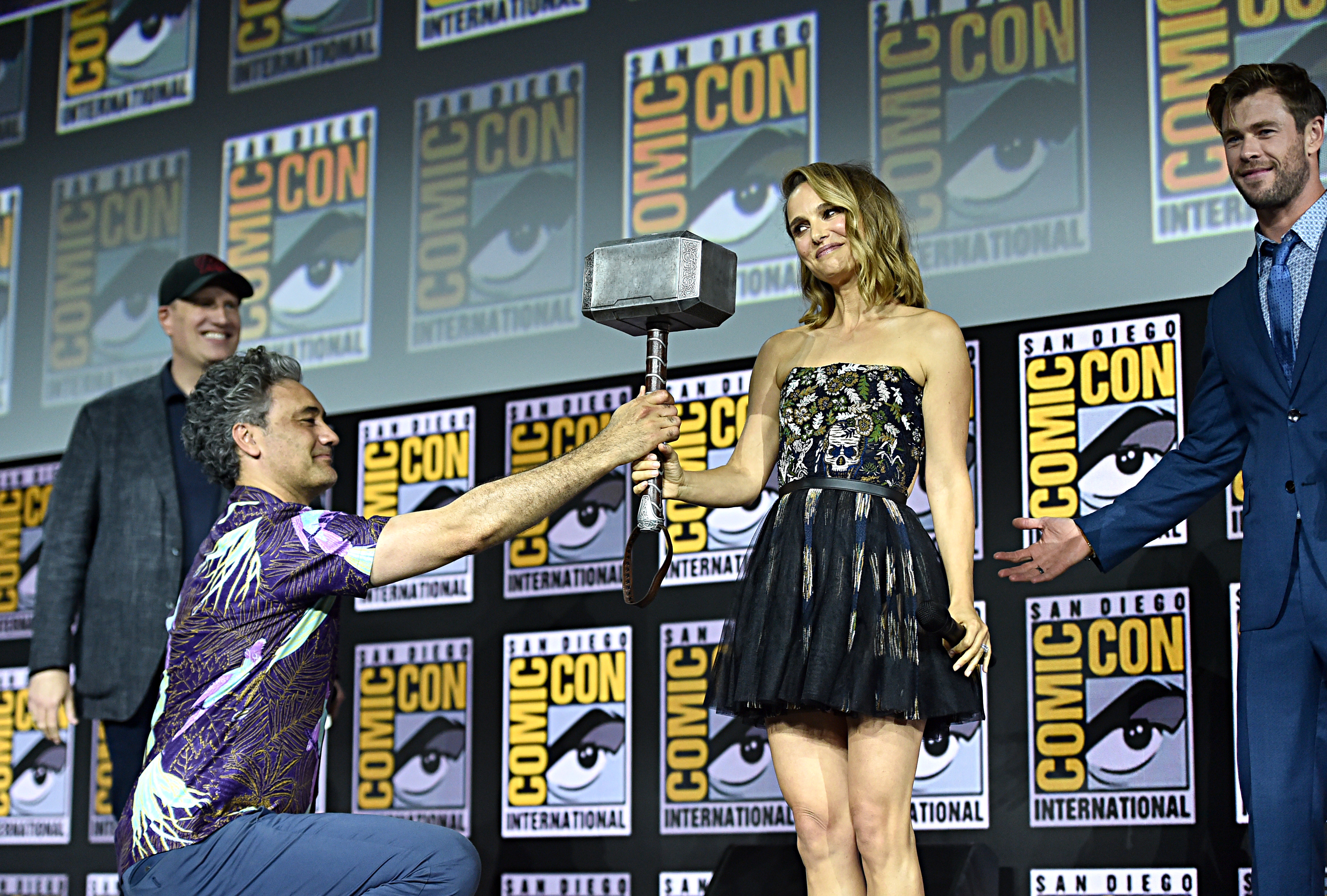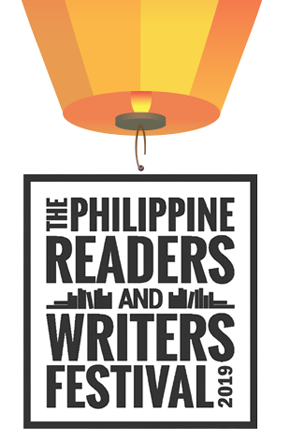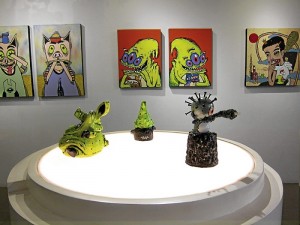
Consider “Vomit Boy.”
The bat-eared figurine, sculpted in vinyl, sports some kind of leather fetish mask, while projectile-vomiting a stream of fluorescent green puke, which also comes in raspberry.
You might think “Vomit Boy” would belong in some novelty shop, together with the fake dog turds and “X-ray Specs,” and you might be right. “Vomit Boy” is a toy, albeit one that comes in a limited edition of 30 pieces. But right now it’s also part of “The Unwaking Hour,” an ongoing exhibit by “Vomit Boy” creator JJ Zamoranos, at Secret Fresh, an art space/store/hipster hangout in San Juan.
Dig it, it’s urban art, a movement that has coalesced from various streams of contemporary expression that include graffiti, comics, tattoos, urban sports like skateboarding, poster illustration and designer toys.
While mainstream art is still hung up on the mythos of the solo auteur as cultural avatar expressing universal truths for the ages, urban art embraces the ephemeral nature of modern life, where art is just another commodity to be desired, purchased, consumed and eventually discarded, or hoarded, as the case may be.
In Manila, urban art aficionados have created their own alternative network to the thriving gallery circuit, in the form of exhibition spaces/stores such as the aforementioned Secret Fresh, Vinyl on Vinyl in Makati and White Box in Cubao X.
In its own way, urban art could be just as subversive as, say, Mideo Cruz’s “Poleteismo,” since it stretches notions of art beyond the average person’s comfort zone.
In a conversation with CCP 13 Artists awardee Lena Cobangbang, who curates for Secret Fresh when she isn’t exhibiting her own critically-acclaimed work here and abroad, SIM delves deeper into the urban art phenomenon.
Sunday Inquirer Magazine (SIM): What exactly is “urban art”? How does it differ from pop art?
Lena Cobangbang (LC): Urban art seems to be the catch-all phrase to include street art and graffiti, bombing, vinyl toy collecting and customizing. It’s mostly an offshoot of hip-hop, or the vernacular art of urban youth cultures which also includes turntablism, car customizing, urban spelunking. I don’t know if skateboarding should also be included here as its origins were essentially urban, as a direct dialogue with architecture and the city.
I think it’s more rooted in “lowbrow” culture, which locally comes mostly from flipping through Juxtapoz and Giant Robot, two magazines that are like the Art Forum and Frieze magazine of this style stream without the heavy handedness of theory….and a bit of Adbuster for those who have a more radical and/or political bent in their method/motivations.
Most in the urban art scene are self-taught artists or were undergrads (drop-outs), or had stints at graphic design, web design, advertising, etc. I guess this is partly due to the DIY ethos that came from Punk and which actually characterized the distribution and dissemination of any subcultures’ distinct mode of identity.
Urban art is distinct from pop art (from the art historical viewpoint) in that pop art celebrated consumerism, the machine-made, mining pop culture or consumerist culture for its cheeky diatribe against the mass hysteria of consumerism itself but which the art industry is also part of, stripping it of the aura of “transcendent enlightenment” which is its very investment in the culture capital of art.
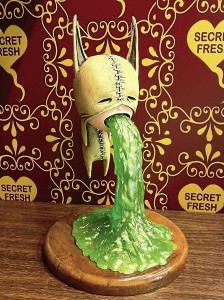
Pop art was still viewed in the traditional setting, the gallery, as it only sought to react from within the system of art (in the beginning). But now it’s just a way of distinguishing subject matter and style, or rather more on style.
Urban art is more about doing it for one’s own within the landscape of the post-capitalist system – no more mass produced items but only rare bespoke ones that celebrated individuality. It is another way of emancipating themselves from high corporate culture by being self-entrepreneurial , i.e. self-merchandising via shirts, stickers, customized apparel, comix, etc.
SIM: What’s the local urban art scene like? Who are the emerging names in Philippine urban art?
LC: The primary figure in the local urban art scene is PSP (Pilipinas Street Plan— https://pilipinastreetplan.blogspot.com/2011_04_ 01_archive.html) which is spearheaded by Mark Salvatus a.k.a. Boy Agimat. Members of this loose collective of street artists have been actively exhibiting, and mostly in the roster of Secret Fresh gallery (such as Nemo Aguila, Whoop, Epjey Pacheco, Egg fiasco, Exld, A.lien, etc.,)
Early on, galleries Pablo and Chunky Farflung in Cubao (mid-2000), White Box (mid- to late 2000) and Cubicle gallery in Pasig (late 1990s to early 2000) showcased such art or artists identified with such art.
I think urban art has been developing in the periphery since the late 1990s and continues to do so now, with invitations to do lecture demos in schools, invitational competitions within South East Asia, commissioned wall works by lifestyle brands and local governments, and more galleries being open to artists doing such art. It’s mainstream already.
SIM: What do you look for when you curate shows for Secret Fresh?
LC: Always I look for those with “fresh” approaches to such art, those whom I see can readily develop their own visual idiom/style. It’s not concentrated on just paintings or drawings, I’m also looking for those who also do photography (documentation of graffiti or youth subculture/underground culture scenes), animation, video, even architecture or functional sculpture – in short, anyone who can offer a whole new approach to things, or who are engaged in a conscious dialogue from which they can draw inspiration with a smart approach.
SIM: What do you see in the future for the local urban art scene?
LC: It was predicted in some foreign online art publication that it may soon fizzle out if the market for such also fizzles out as with pop art before. But foreign art markets are so vulnerable to stock market crashes, and since the Philippines isn’t as vulnerable, it still is enjoying its time now it its infancy. Actually, compared to the larger international art market, it’s still thriving. •

